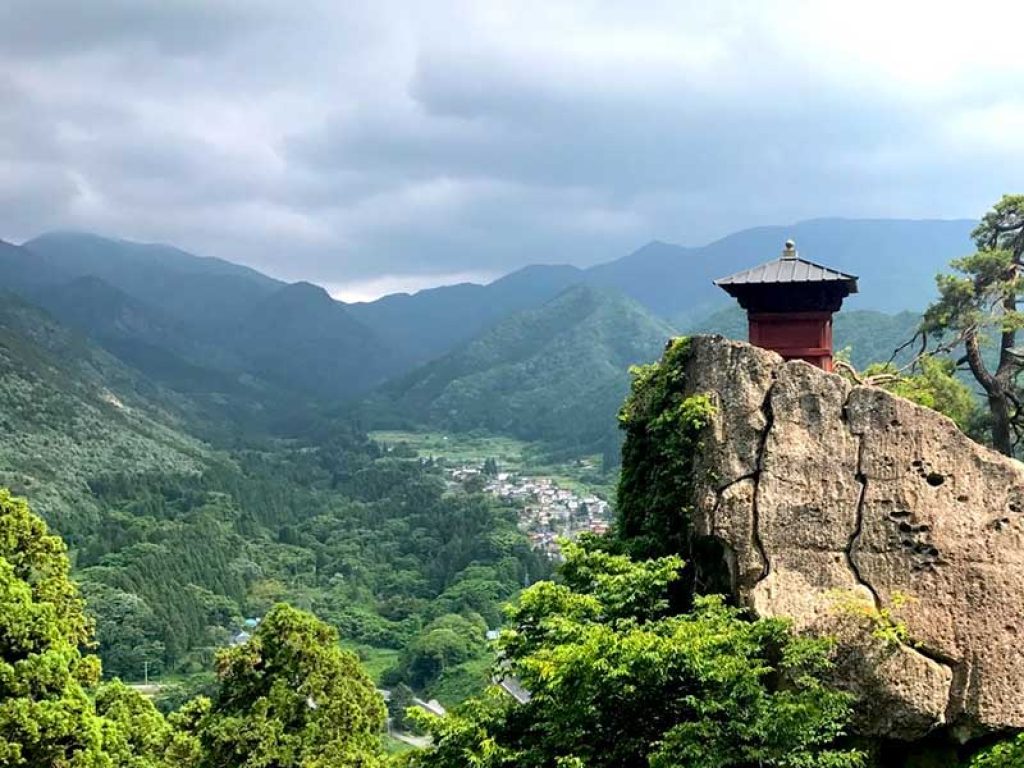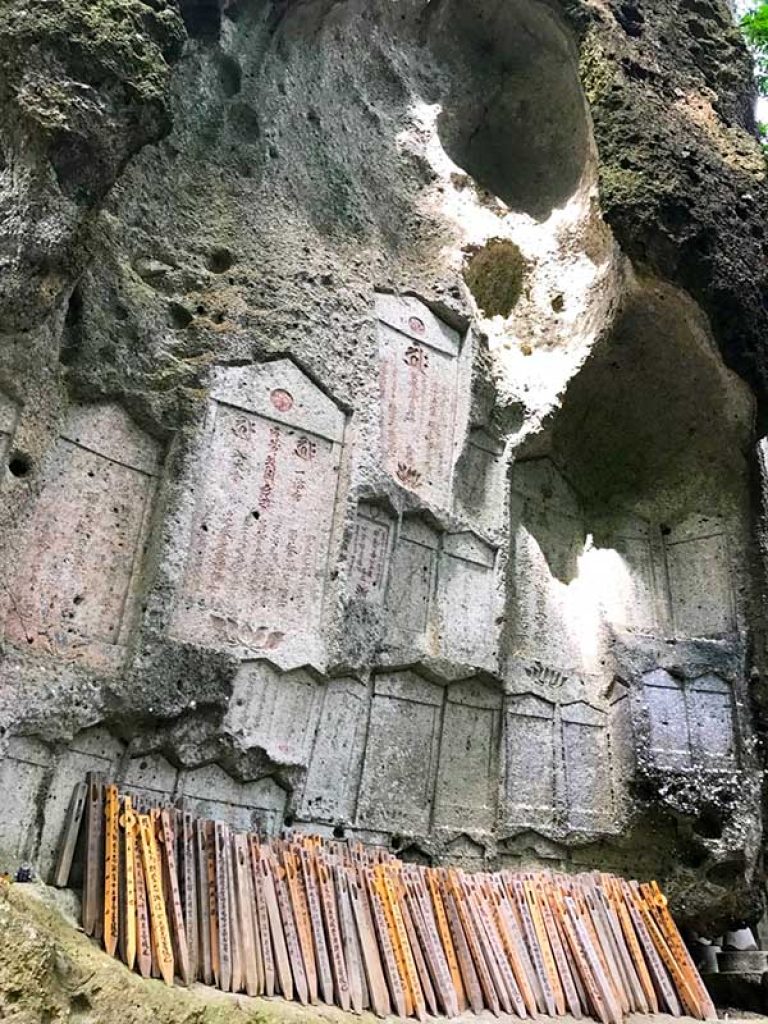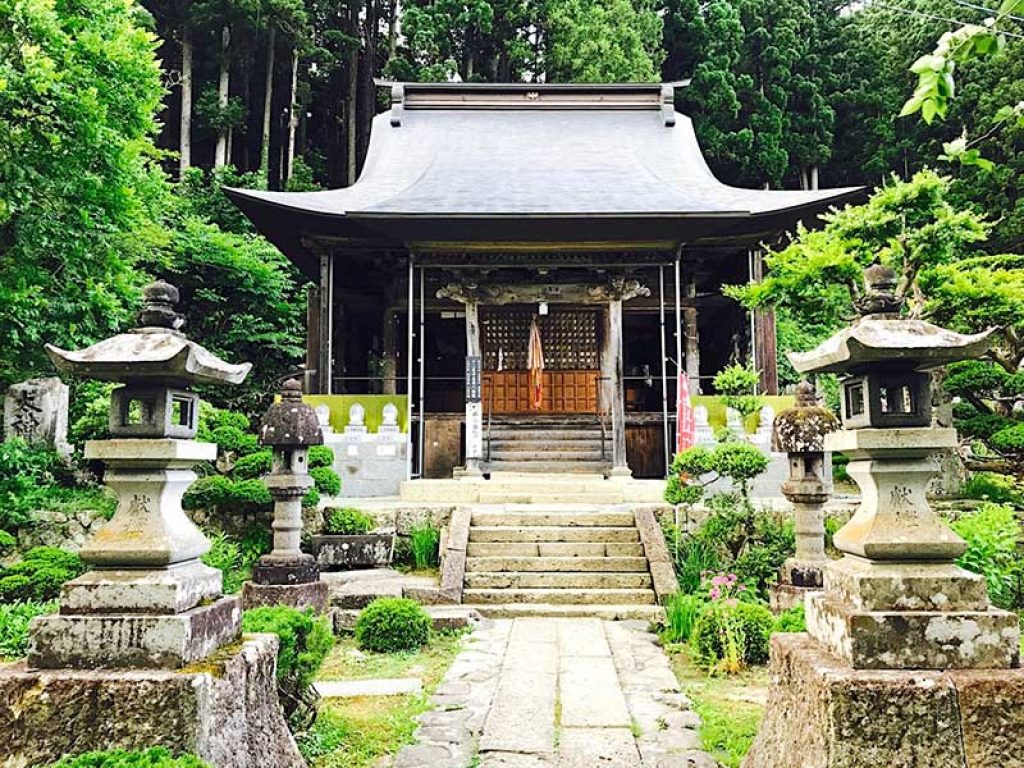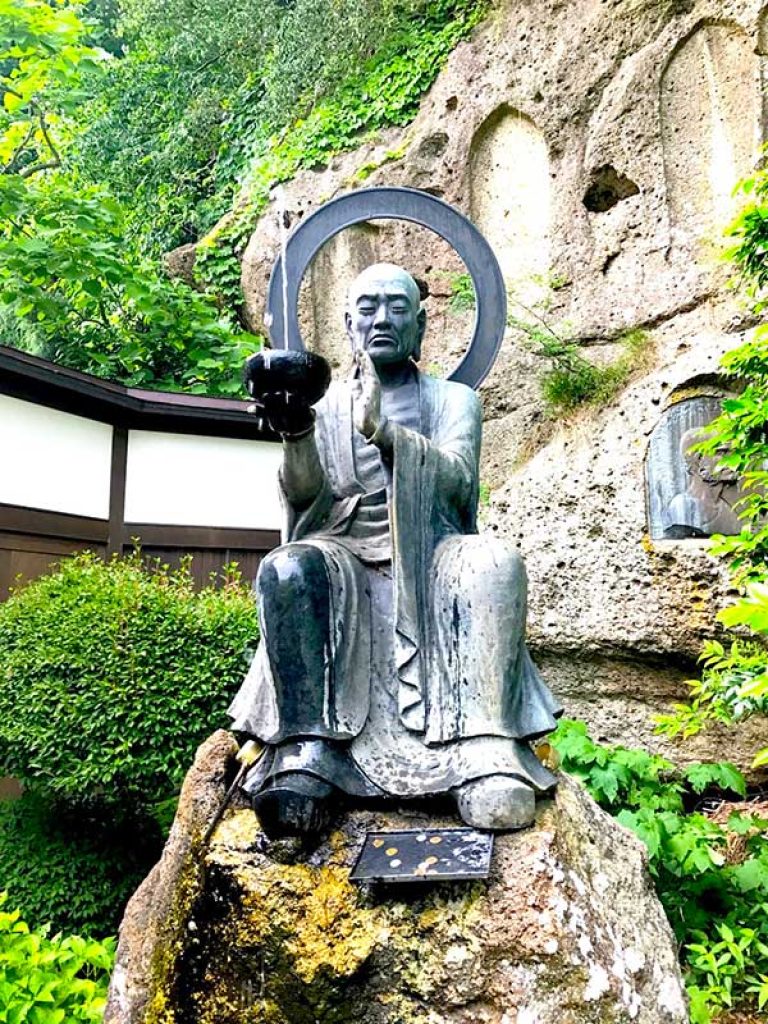The Basho Wayfarer Trail takes visitors on an enthralling journey that perfectly blends the past and present and invites them to uncover the timeless essence of the natural world and the human spirit. A unique combination of intellectual discovery and unmatched beauty may be found on the Basho Wayfarer Trail, an exquisite landscape trip that influenced the famed Japanese poet Matsuo Basho.

Following this route, visitors can walk in the haiku master’s footsteps from the 17th century and experience the tranquil settings and rich cultural heritage that shaped his most famous works. This article discusses the essential things you need to know about walking the Basho area to get the most out of your trip and how to be safe during the hike.
Brief History of Basho Wayfarer
The Basho Wayfarer Trail is a modern homage to the writings of Matsuo Basho, a well-known Japanese poet of the Edo Period (17th century). In his well-known travelogue, “Narrow Road to the Deep North” (Oku no Hosomichi), Basho experienced and described the landscape that the road meanders through.
In the latter half of the 17th century, the renowned haiku poet Matsuo Basho embarked on his epic journey. His voyage across Japan’s northern regions is chronicled in the book “Narrow Road to the Deep North,” which also includes his most profound observations and the beauty of the natural environment. Basho’s colorful poetry, which he wrote while on the road, had a lasting influence on Japanese literature and is still read widely today, and it still motivates many to hike or walk his path.
While walking this trail, hikers engage with Basho’s literary journey and appreciate his continuing influence and the enduring beauty of the places he visited. Modern travelers can appreciate Basho’s attitude of inquiry and reflection through this immersive experience, creating a solid connection across generations and countries.
Description of the Sight

The Basho Wayfarer trail in Japan is more than a hike; it’s an immersive journey through nature and time that follows the poet Matsuo Basho’s famous haiku. This walk takes hikers past the settings that inspired some of his most famous lyrics, enabling them to feel a solid connection to Japan’s natural beauty and the spirit of artistic reflection.
You’ll come across tranquil temple gardens, historic stone walkways, and stunning views as you travel the route that Basho once took. These sights have mainly not altered since his day. It is more than just a physical challenge; it’s a journey into the heart of Japan’s cultural and natural legacy, where each step becomes a stanza in the evolving poem of your own life-changing experience.
The Basho Wayfarer Trail offers a dynamic fusion of literary appreciation and outdoor experience as a link between the past and the present. As they travel this trail, hikers interact with Basho’s literary journey, developing an appreciation for his ongoing influence and the enduring beauty of the regions he traveled through. Through this immersive experience, modern tourists can enjoy Basho’s spirit of discovery and introspection, forging a potent bond across generations and cultures.
You can retrace the poet’s tracks with the six-day Self-Guided Basho Wayfarer, which starts in Sendai and ends at Yamadera. Each day, the traveler can walk for five to 14km (three to four hours), following detailed instructions and an itinerary that suits his energy level. The route is gently undulating, but there are some forest trails and steep stone steps to conquer.
Japan is home to several historic paths that link its cities and temples. The route traveled by the poet Matsuo Basho more than 300 years ago is replicated in this self-guided tour.
Ways to Get There
1. Train: One of Japan’s most significant ways to travel between cities and regions is by train, thanks to the country’s vast and effective rail system. You can travel great distances fast and comfortably thanks to Shinkansen’s famed speed and connectivity.
2. Local Buses: Local buses are a dependable form of transportation in regions that aren’t reachable by train. The regular buses run from Sendai to your accommodation and even the trail. They link small towns, tourist destinations, and rural areas.
3. Walking and trekking: Walking and trekking through picturesque locations is a terrific opportunity to connect with the terrain and fully immerse yourself in nature, which will help you experience the spirit of Basho’s voyage. All around Japan, there are numerous ancient hiking and pilgrimage pathways.
4. Renting a car: Although less popular than public transportation due to urban congestion, renting a car can help travel through remote areas and other places where public transportation is not as readily available. By renting a car, you don’t have to worry about locations. The driver can easily navigate the area and even show you some places.
Details on hiking The Basho Waferer Trail
When to Go: Weather and Season
The weather may significantly impact the ambiance and mood of the places you visit. For instance, going to a calm temple garden amid a drizzle or strolling through a forest amid a light snowfall can arouse a distinct sensation of serenity and reflection, similar to the feelings of Basho’s poetry.
Warmer and muggier weather is introduced throughout the summer, from June to August. While this time of year offers spectacular views and lush vegetation, hikers should be ready for hot weather and sporadic showers. Sun protection and proper hydration are essential.
Hiking is most popular throughout the fall, which lasts from September to November. The crisp air and gorgeous fall foliage transform the paths into a painter’s pallet of reds, oranges, and yellows. Hiking is enjoyable due to the milder temperatures, and the stunning environment invites visitors to appreciate Sendai’s abundant natural beauty fully.
Sendai is covered in snow from December to February, making for beautiful, rugged hiking terrain. Snow-covered paths and frozen landscapes are attractive, but it takes suitable winter clothing and prudence to travel safely.
It is advisable to visit Sendai for the hike from mid-may to early November; the climate is often milder and more suited to outdoor activities during this time. Although it is warmer from June to August, it is not as oppressively hot and humid as it is during the height of summer. Hiking is even more comfortable in the spring and fall (May, September, and October) when the weather is almost perfect.
Accommodation
1. Ryokan: A stay at a ryokan (traditional Japanese inn) can be a lovely serene, and culturally rewarding experience. Ryokans are lodging establishments with traditional tatami-mat rooms, futon mattresses, and frequent meals served in the room. This option offers a glimpse into Japanese hospitality and way of life. Not only will you enjoy the Japanese culture when you hike, but you can also be immersed in it when you rest.

2. Minshuku: These family-run inns provide a more specialized experience. They often operate in rural areas and serve home-cooked meals. This decision might reveal information about local traditions and culture. Most of these Inns are available near the Basho Wayfarer starting points, making it even better.
3. Temple dormitories (Shukubo): Several temples offer lodging to travelers on religious or historical pilgrimages. One might have a unique spiritual experience by staying in a temple, such as participating in morning prayers and meditation.
4. Hotels: There are hotels in more urban locations, ranging in style and cost. Remember that hotel decor and ambiance might vary, so think about picking accommodations that go with the theme of your trip. When choosing hotels, pay attention to how easy it will be to get to the trail from your hotel.

Food and Water
1. Always keep a reusable water bottle with you: This is crucial. To stay hydrated, often refill it at water fountains, convenience stores, and rest stops. Hiking can be pretty tasking, so you will need water. Look for water sources like rivers, streams, and public faucets throughout your journey. You may be able to replenish your water bottle at these locations and carry less weight overall.
2. Bring Snacks: Trail mix, energy bars, dried fruit, and almonds are a few compact, transportable snacks high in energy. These provide fast meals during breaks. You will need them.
3. Local Markets and Shops: In many rural areas, local markets and shops sell fresh fruits, vegetables, and other delicacies. Include these places in your itinerary. You can also get Ready-to-Eat Foods In some of these places. Ensure to try out Japanese foods that you never had while keeping your stomach in check.
4. Cooking Equipment: If you intend to camp or stay in a place with a kitchen, think about bringing light cooking equipment: This enables you to make straightforward dishes like soup or quick noodles. Also, Learn about easy-to-transport, unprepared local specialties. These can enhance the cultural flavor of your travels.
Challenges along the Basho Wayfarer
1. Trail Conditions: Uneven terrain, rocky paths, tree roots, and loose gravel can make hiking more physically demanding and require careful footing.
2. Navigation: Trails may be poorly marked or have multiple intersections, leading to confusion and the possibility of taking wrong turns. It would be best if you carried physical maps, GPS units, and smartphone apps for navigation
3. Blisters and Foot Discomfort: Ill-fitting footwear or excessive moisture can lead to blisters and discomfort, impacting the overall hiking experience.
4. Restroom Facilities: Access to restroom facilities may be limited or unavailable: this could require you to plan accordingly.
5. Limited Cell Signal: Remote areas might have weak or no cell reception, limiting communication and emergency assistance options.
Helpful Tips
- A fully charged smartphone with an emergency contact list, a first aid kit, a whistle, a torch, a multi-tool, and other items should all be carried. Include any personal medical devices and necessary medications.
- Share Your Itinerary: Let someone you trust know where you’re going and when you intend to arrive. Thanks to this, someone will know your location in an emergency.
- Remember to go with your camera so you can take pictures of cute things and always go back to them.
- Cultural Sensitivity: When getting food and water, respect regional customs and traditions. Request authorization before entering private property to use water supplies.
- Communication: Information access may be restricted in rural places. Inquire locally about the availability of food and water along your trip.
Potential Dangers
- For modern visitors, exploring unfamiliar regions contains appeal and difficulties, as celebrated in Basho’s literary journey. Even the most daring travelers can be tested by dangerous roads, high mountains, and dense forests, even as the beauty of nature beckons. The hazards are amplified by unpredictable weather, hot summers, and chilly winters, which affect physical health and travel plans.
- Today’s travelers may experience solitude and sparse amenities in far-off places, aggravating possible risks. Accidents and illnesses are made more dangerous by poor communication and restricted access to healthcare. Interactions may be hampered by linguistic and cultural obstacles, which can also hinder aid. Traveling in a foreign country can lead to misunderstandings or challenges in communication. Hikers should familiarize themselves with local customs and basic Japanese phrases.
- There is also the danger of encountering wildlife, such as boars or giant flying squirrels. It’s vital to minimize attracting animals by properly storing food and waste. Modern travelers uphold the essence of Basho’s journey by embracing nature’s allure while respecting its unpredictability.
Conclusion
A magical voyage into nature’s embrace, where the spirit of renowned poet Matsuo Basho reverberates, can be had by hiking the Basho Wayfarer trail. You can discover peace in quiet temple grounds, marvel at flowering cherry blossoms, and see landscapes painted in the tones of his lyrics as you follow the path he once walked.
Each step reveals a sensory symphony, including the touch of old stones, the whisper of leaves, and the aroma of wildflowers. Accept the difficulties—including arduous ascents and the whims of the weather—and learn to enjoy the benefits of isolation and introspection. Basho’s legacy flourishes amid challenging terrain, enticing you to appreciate the beauty of nature and create your lyrical trip.
As you plan your trip to Japan, Sendai to the BashoWayferer, keep in my mind that you might have certain limitations, but that should not hinder you from making the best use of your time and enjoying the hike to the fullest.

